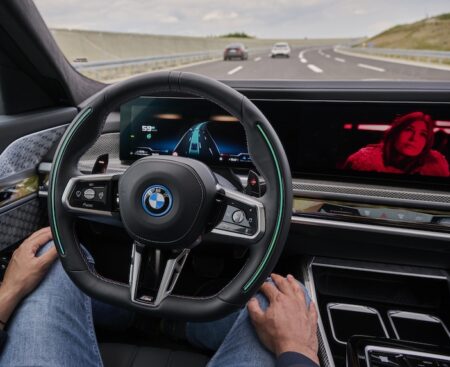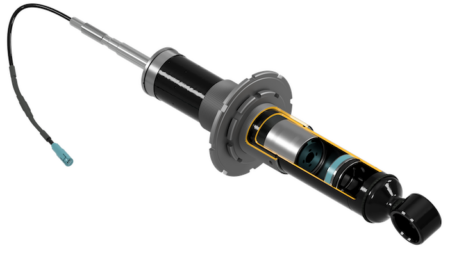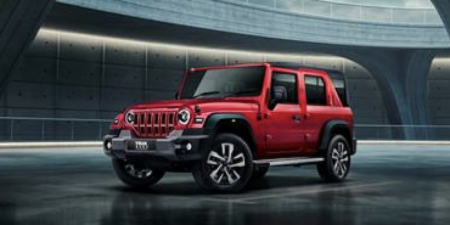Tenneco has introduced a scalable architecture concept for advanced electronic suspension systems. The concept works around the latest version of Tenneco’s proven Continuously Variable Semi-Active dampers, CVSA2, which allows for the easy scaling of semi-active systems up to advanced and fully active systems.
The CVSA2 dampers are optimized to continually strike the best balance between ride comfort, and handling, drawing on a variety of inputs and influences. Each CVSA2 damper features two internal, independent electro-hydraulic (CES) valves that were developed between Tenneco and Öhlins Racing.
Controlling the CVSA2 dampers is a Tenneco developed ECU, designed to exploit the full-range of the electro-hydraulic valving system., by processing data supplied by either external sensors attached to the car, or through core CAN data transmitted throughout the car.
What this means is that cars equipped with CVSA2 from factory, are easily upgradable to Tenneco’s more advanced Kinetic H2CES or ACOCAR platforms as an option. This is achievable thanks to the common design of the system’s actuators, sensors, and ECUs.
H2CES and ACOCAR both work around the same design principles, that see the front, and rear, anti-roll bars, and dampers replaced with four ‘double-acting’ hydraulic cylinders with integrated CES damper valves, and other related components.
The CES valves restrict the flow between the cylinder and accumulators to electronically control roll, bounce, and pitch, allowing for the continuous decoupling of transient ride and handling performance.
ACOCAR builds on the principles of H2CES, by introducing hydraulic pumps to the shock absorbers. By introducing an additional energy force to the damper, the system is no longer dependant on the movement of the wheels to generate damping force.
Both of the available upgrades introduced by Tenneco are billed as providing drivers with ‘ultimate control, combined with excellent handling’.




